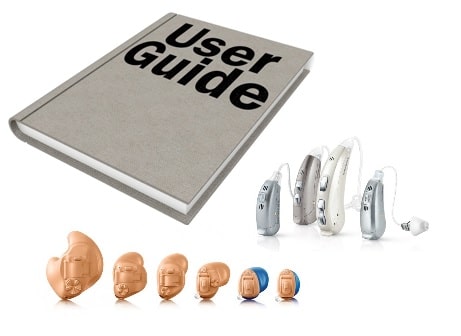Grit, guts, determination, fortitude, perseverance, tenacity. Those are a few of the words used to describe an individual’s ability to overcome obstacles and challenges in their life. No doubt, hearing care professionals, in their daily encounters with patients, are all-too familiar with these characteristics and how they affect treatment outcomes. Clinicians intuitively know that patients with more grit, mettle and determination are more likely to willingly accept a treatment recommendation, and take initiative to learn the skills needed to be a successful long-term hearing aid user. To top it off, patients with the ability to confront these challenges usually experience superior outcomes compared to those lacking in resolve.
Although it has many names, researchers call this trait – the ability overcome obstacles and persevere in the face of new or challenging circumstances – self-efficacy. Slightly different than the more commonly known trait of self-confidence, self-efficacy, according to several studies, contributes in a substantial way to patient hearing aid outcomes. The age-old question is, can a clinician improve a patient’s self-efficacy skills with counseling, or is it an innate characteristic that is immune to intervention?
Studies published about a decade ago indicate that patients with higher levels of self-efficacy behaviors used their hearing aids for longer periods during the day and were generally more satisfied with them. But can these self-efficacy skills and behaviors be modified or improved when targeted by a clinician?
A recent study, published in the American Journal of Audiology, builds on the self-efficacy hearing aid research. Alexandra McMullen and two colleagues at the University of Canterbury in New Zealand conducted a two-part study that evaluated the use of a revised hearing aid user guide on self-efficacy in older adult non-hearing aid owners.
In an interesting twist, McMullen and colleagues evaluated the impact health literacy, defined as a group of skills required to access and act appropriately on health information, had on changes in self-efficacy behavior. That is, by simplifying and enhancing the overall readability of a hearing aid user guide it was hypothesized by the researchers that self-efficacy behaviors could be improved.
In Part 1 of their study, the overall readability and suitability of a hearing aid user guide was evaluated from a health literacy perspective. Their revision of the hearing aid user guide included the creation of a video version of it. Part 2 of the study evaluated the impact the revised hearing aid user guide and video had on the self-efficacy behaviors of 30 older adults.
Improving Self Efficacy Behavior for Hearing Aid Users
Results of the study showed a revised hearing aid user guide, along with the addition of a video that incorporated basic health literacy standards in its design lead to improvements in self-efficacy behaviors. Indeed, a patient’s ability to buckle down and complete a challenging task can be improved when targeted and addressed by an audiologist using a well-designed tool. For clinicians, this finding shows that items many take for granted, like the universal hearing aid user guide, when written more clearly and delivered in video format can influence a patient’s ability to succeed in learning all the new tasks associated with hearing aid use.
This is an important study because, quite simply, the numbers don’t lie: 20% of hearing aid owners never or rarely use their hearing aids. Undoubtedly, through negative word of mouth, non-use contributes to the low hearing aid uptake rate of about 30%.
If clinicians can improve hearing aid use through the improved design of a simple hearing aid instruction booklet or deliver the educational material in a more engaging, user-friendly format, like a web-based video, clinicians can move the needle on these low numbers.
Finally, this study reminds us that our patients are better served when clinicians collaborate with health literacy experts, design engineers and hearing aid manufacturers to identify novel ways to reinvigorate shopworn tools like the ever-present hearing aid instruction booklet. Addressing a widespread problem, in other words, doesn’t always require the use of a state-of-the-art microchip or high tech algorithm; sometimes a simple human touch or a more thoughtful version of an old tool is all that is needed.
Reference: McMullen, A., Kelly-Campbell, R., & Wise, K. (2017) Improving hearing aid self-efficacy and utility through revising a hearing aid user guide: a pilot study. American Journal of Audiology. 8, 1-12.







